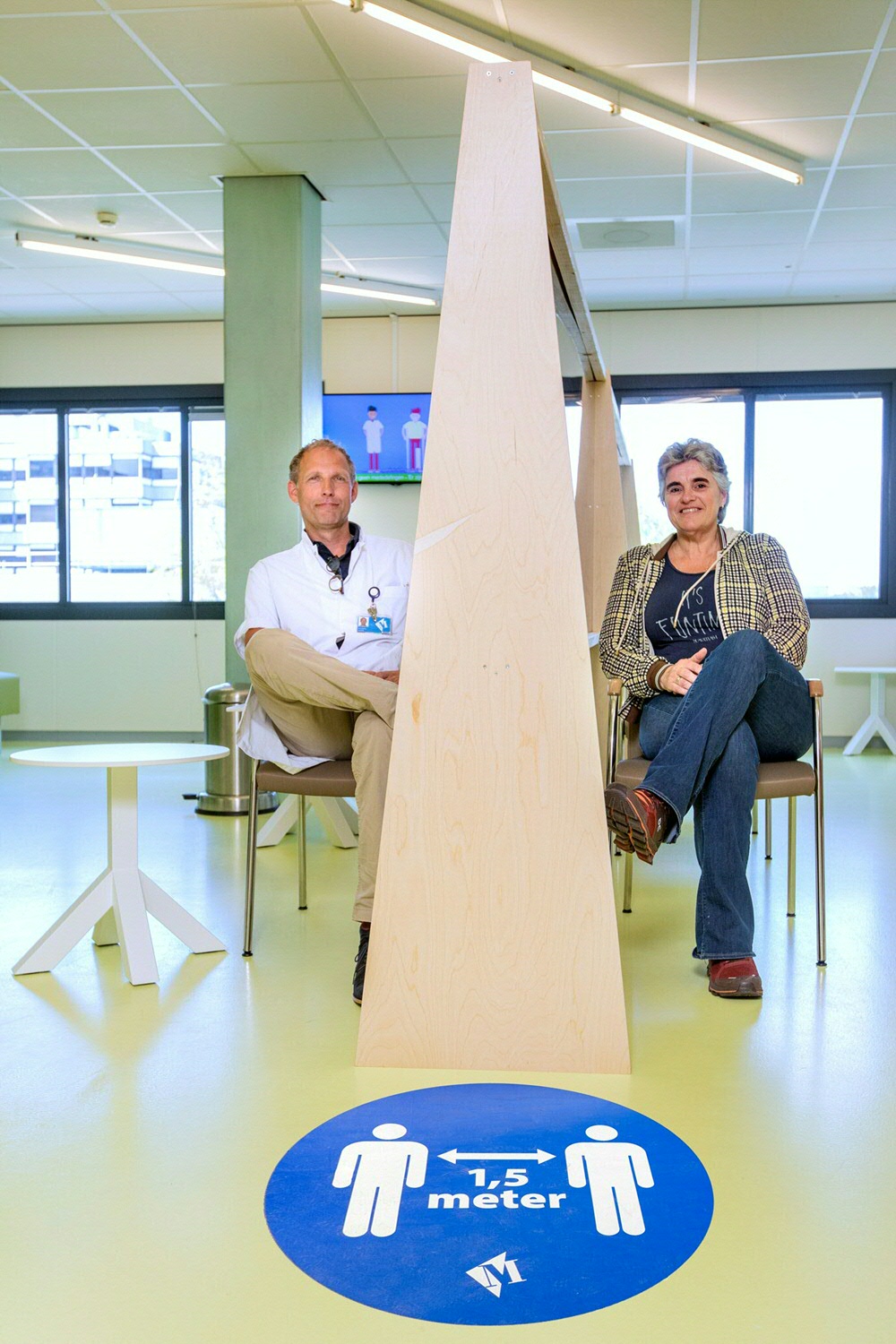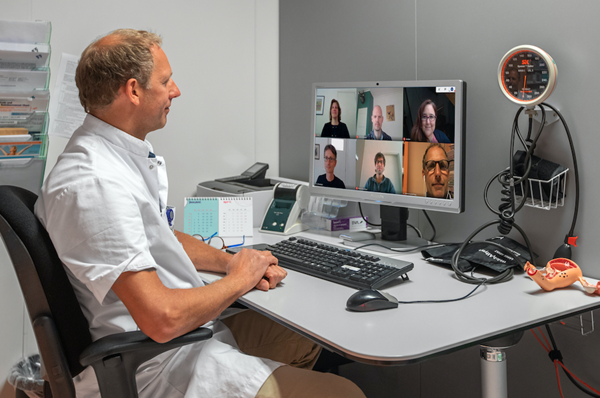Martini Hospital and the UG are working together on innovative application for planning ‘1.5-metre care’ for outpatients
When establishing the provision of regular healthcare, the most important starting point is to guarantee patient safety. Martini Hospital wants to help as many patients as possible – but the hospital and waiting rooms should not become too crowded. Martini Hospital and the University of Groningen (UG) are therefore working together to develop an innovative application for planning ‘1.5-metre care’ for outpatients. Justin Drupsteen, Integral Capacity Manager at Martini Hospital: ‘Due to the 1.5-metre regulation, the number of patients permitted in a waiting room at any given moment may have to be reduced by as much as 75%. To be able to serve patients as well as possible, we will have to introduce a completely new way of organizing our outpatient clinics and diagnostic processes such as X-rays and echocardiograms.’
Patient safety through planning
At the end of April, Martini Hospital increased its share of regular care again. To this end, patient safety was and is the most important starting point – ensured, for example, through implementing measures such as one-way traffic, screening at the entrance and distance markings in the hallways. A 1.5-metre distance between patients must also be maintained in the waiting rooms. This means that fewer patients may sit in a waiting room at the same time and that fewer treatment rooms may be scheduled for use at the same time. Where the obstacle for healthcare before the outbreak of COVID-19 was the number of doctors, nurses or treatment rooms available, this has now become the waiting room.
Justin Drupsteen: ‘Of course, we know that many patients are waiting for treatment or for an investigation into their symptoms. In this situation, we want to ensure that the space available is being used optimally. Together with the UG, we are working on a tool to generate outpatient clinic schedules that take into account many of the challenges posed by the 1.5-metre society. To allow this tool to work as well as possible, it is important that our patients do not arrive for an appointment too late or too early; the further the appointment time is deviated from, the fuller the waiting rooms will be.’
The planning of uncertainty or the uncertainty of planning
The application was developed by UG researchers Prof. Iris Vis, Prof. Kees van Roodbergen, Dr Michiel uit het Broek and Dr Ilke Bakir. Michiel uit het Broek, researcher in the Department of Operations at the Faculty of Economics and Business, explains: ‘We have developed a mathematical model that generates appointment schedules through which as many patients as possible can be seen whilst ensuring that the number of patients in the waiting room remains as low as possible, by applying all sorts of distribution options. In this way, not all appointments will begin at the same time, doctors’ breaks may be rearranged and free treatment rooms may be used as waiting rooms. Some time between appointments will also be ensured. This is, of course, less efficient for the doctors, but it is sometimes necessary in order to guarantee that not too many patients are sitting in the waiting room at the same time.’
Iris Vis, Professor of Industrial Engineering: ‘The application also provides estimates of the risks that may be incurred if the maximum capacity of the waiting room is exceeded. There is always a chance that this may work differently in practice than expected, for example if an appointment runs over its allocated time. But, of course, the tool cannot exactly predict how individual doctors, staff members and patients will behave, or whether all of the organizational measures will be implemented effectively. It is therefore important to initiate this slowly.’
The idea is to begin with a low number of appointments, for example 40% of the usual number. If it appears to work well in practice, then the number of appointments can be increased step-by-step on the basis of the appointment schedules generated by the tool.
Testing
The first version of the application is currently being tested at the outpatient clinic of the Department of Obstetrics & Gynaecology. Many healthcare specialisms have various distinguished appointment types, which makes planning them even harder. Marinus van der Ploeg, gynaecologist at Martini Hospital: ‘We want to offer everyone the care that they need as soon as possible. To this end, the distribution of space and time is the motto. This is an enormous logistical challenge and we are very happy that the UG is helping us in this.’ The tool has not specifically been developed for the Department of Obstetrics & Gynaecology; all healthcare specialisms can use this tool to support them in organizing their schedules. For this reason, Martini Hospital wants to start using the application at other outpatient clinics as soon as possible. Patients will, of course, be extensively informed about the adjusted logistics at the hospital.

Next steps
In the follow-up study, the application will be extended to also take practical aspects into account, such as the availability of doctors and wishes in terms of what a good appointment schedule should look like. In addition, by applying the tool, insights into the effects of the measures on the available capacity for care within the hospital can be obtained. The possibilities for creating automatic synchronization between the tool and the hospital’s own information system will also be investigated. At the moment, the researchers are working together with the computer cluster at the Center for Information Technology of the UG to develop a web interface and to calculate complex schedules.
Other hospitals that are interested in this project can find more information at www.rug.nl/cope/1.5.

More news
-
09 December 2025
Are robots the solution?
-
10 November 2025
Decentralization of youth care
